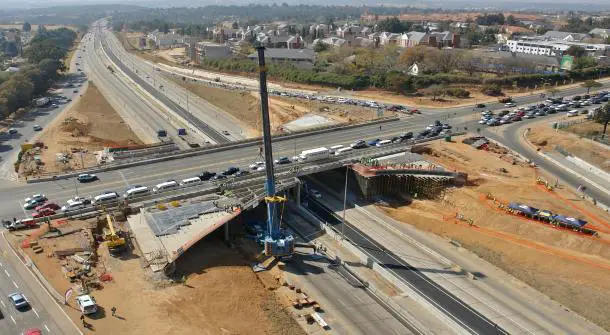Africa construction sector attained a growth of 46.2% in 2014 to register a significant jump to US$103 billion from US$222 billion recorded in 2013. This is according to a report on investment of mega projects in 2014. Deloitte, which reported that Africa had registered 76% completion rate according to their previous reports, said Africa is still a “magnet” for Foreign Direct Investment (FDI) and intra-African capital inflows.
Leading on the expenditure list was heavy investment in transport, energy and power projects; this is according to Delloitte in its Deloitte African Construction Trends Report 2014 report. The institution said that expectations are still high for infrastructure to provide Africa with needed market expansion.
Although the Public-Private Partnership model of investing in Africa is currently selling hot, it is imperative for Africa to solve the various challenges encountered by international contractors in order to open itself up for more foreign direct investments.
Current challenges and probable solutions
“Africa has no funds” for massive infrastructure projects, is the notion spread out to the naked eye. But underneath lies what AfDB has termed as “serious constraints” and poor business environment. AfDB went on to say last year that many countries lack adequate legal and regulatory frameworks for PPPs and lack technical skills to manage PPP programmes and projects. Still, according to the development bank “unfavourable investor perceptions” of country risk have to be overcome.
Last year, IMF told a ministerial-level International Monetary Fund (IMF) conference in Cameroon that Africa needed what it called “structural reforms” to promote a strong private investment climate. In fact, the conference focused on “desirability of tapping private sector financing”. These structural reforms should entail removing/reducing the lack of infrastructure connectivity that is hampering faster growth – through increased water, power and transportation costs. These, IMF say, are reducing productivity in the private sector by about a half. Arnaud Dornel, who is a World Bank’s lead financial sector specialist said the continent needs 15% of its gross domestic product (GDP) – totaling to US$93 billion – to fund its infrastructure projects annually. The public sector, the conference heard, was financing over 50% of the $45bn annual spend in infrastructure projects. He said Africa could effectively cut down the infrastructure gap to US$31bn through “operational optimization” in which 40% of the optimization would be undertaken by the private sector.
Yet PPPs, although represent a good for African governments in revamping infrastructure, can be damaging if good institutions, regulations and sound budgeting, accounting and reporting are not implemented. This is according to IMF public financial management specialist Maximilien Queyranne speaking at the event. He conceded that PPPs are “complex to design and implement”. He said PPP procurement required “due-diligence/multi-stage gateway process” as 62% of all renegotiated (55% of all PPPs are renegotiated) PPPs end up with tariff increments. To reduce renegotiation, governments would need to embed a PPP regulatory framework in law than adopt concession contracts (17% of all renegotiations are from PPP regulatory embedded situations compared to 40% of those emanating from concession contracts and 28% from government decrees).
Africa must also remodel the way it procures and runs infrastructure projects if change in investment is to increase. This is according to Akshai Fofaria of Pinsent Masons law firm. “There is significant capital waiting to be invested in African infrastructure but what is needed is more transparency about how projects are procured and run,” he said. “Only when that is in place will international investors support projects. This is true across Africa, including in Cameroon, where it is essential that processes are open, fair and transparent.” He said.
Last year, African Development Bank Group (AfDB) said it would build on India’s success in implementation of private-public partnerships (PPP) to encourage further investments in the continent. In fact, it went on to sign a related agreement.
AfDB sees India as one of the successful in receiving US$300 billion in large-scale investments in infrastructure projects under the PPP model “…With more than 1,000 PPP projects, India is said to have perfected the PPP model, which could arguably provide a solution to Africa’s infrastructural deficit.” AfDB said. The opinion is supported by Ernst & Young and FCCI who said that PPPs would bring in 50% of the $1 trillion to be spent on infrastructure projects in India up to 2017. The government’s effort to streamline PPPs structures will encourage PPPs in the country.
The African Development Bank has already launched a Private Sector Operations Department which advises and funds PPPs in areas like transportation, energy generation, industries, services and agribusiness.
Public Private Partnerships (PPPs) as the modern way of doing things
Africa has been marshaling for public-private partnership model of financing infrastructure, with hope to reducing the financial burden and increasing possibilities of getting private sector-related benefits in undertaking massive infrastructure projects. This augments well with agenda by African governments to undertake massive infrastructure projects with the aim of opening up for more business. Many new ports, railways, roads, sea ports, energy projects and airports are already on their way to expansion or construction.
A PPP, which is a financing model where the government agrees with a private investor to provide services that were previously provided by the government, are hailed as capable of increasing service delivery and production efficiencies, profitability and management of public projects.
Public-run projects and facilities have registered massive inefficiencies, delays, administration problems and corruption, as well as misplaced priorities where projects are undertaken with political agendas.
In comparison, the private sector must first access profitability of projects before pouring money into them. Thus, there are chances of gaining from these projects.

